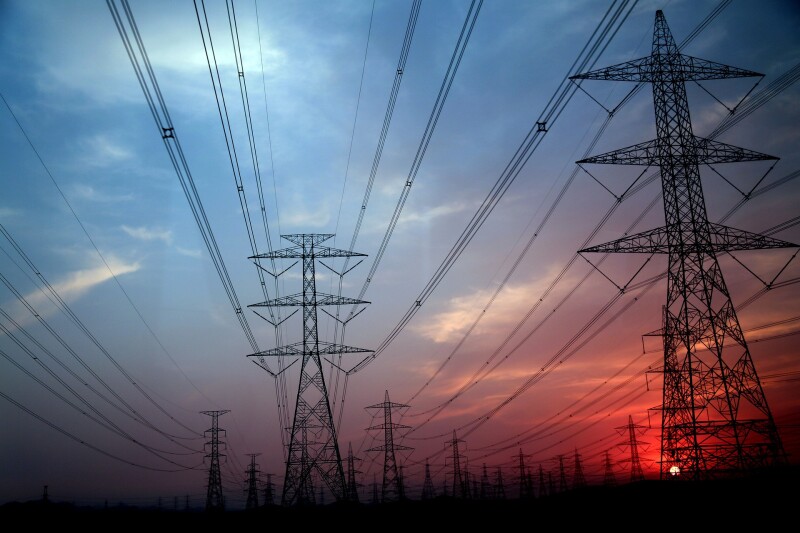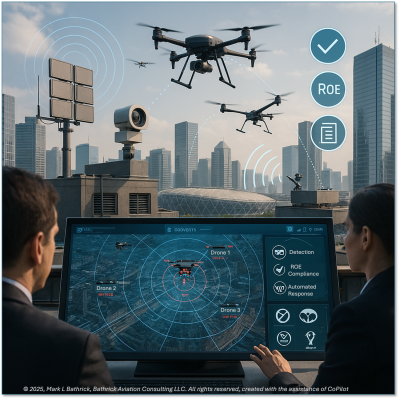Around the world, energy costs continue to rise, and energy consumption continues to increase. In response, companies throughout the energy and utilities industry are looking for ways to reduce expenses. For many, adding uncrewed systems to their operations has proven to be the right solution.
According to the “Drones in Energy Industry Report 2022” from Drone Industry Insights, the worldwide commercial drone market will hit $41.3 billion by 2026. Drones in energy and utilities will make up $6 billion, or 14.5%, of that total—the largest of all drone-adopting industries.
The report stated that oil and gas extraction, power generation, and oil and gas distribution are some of the sub-sectors in the industry that benefit most from the technology, but drones have demonstrated their value throughout the field. For example, uncrewed systems have been deployed to carry out surveying and mapping projects, pipeline and powerline inspections, and detailed assessments of the condition of assets such as storage facilities and processing plants.
Because drones can do the jobs that are crucial to energy operations in ways that are faster, safer, more secure, and less expensive than conventional methods, it’s no surprise that so many companies have made large investments in uncrewed systems. However, some firms have been slow to fully adopt the technology.
Among the common barriers to acceptance are high start-up costs, regulatory hurdles, problems with existing hardware and software, and the desire for more advanced technology. Some in the industry have also cited a reluctance to do things in a “new way,” while others have claimed that managing unrealistic expectations about uncrewed processes has been an issue.
Below is a look at six barriers to the adoption of drones in the energy and utilities industry—and how to overcome them.
1. Start-Up Costs: Purchasing hardware and software and training employees can be expensive, and that makes companies reluctant to commit to drones—even if the long-term savings and process improvements more than cover the start-up costs.
In a Commercial UAV News article, published last year, Chris Fleming, Chief Executive Officer at the drone survey and inspection firm Cyberhawk, explained that many energy companies use different purchasing models to assess the relative value of technologies such as drones.
“These purchasing models use either CAPEX or OPEX. CAPEX refers to companies building their own UAS programs by purchasing hardware and software and integrating the technology into their own processes,” he stated. “The OPEX model is commonly referred to as ‘unmanned aerial systems as a service’ (UaaS) and requires less upfront investment from the energy company.”
In the same piece, Christian Albertson, a Senior Research Analyst at Guidehouse Insights, reported, “UAS work in the energy industry was performed by UaaS providers with few energy companies, except for a few early adopters, building their own UAS programs internally using the CAPEX model. However, in the last 3-4 years, there has been a shift, and energy companies are beginning to build their own UAS capabilities while the UaaS market consolidates leaving a few key market players.”
Albertson said that his change is “indicative of the industry embracing the technology and will only continue as companies realize the benefits associated with integrating the technology into their existing solutions.”
2. Resistance to Change: Every industry has its “tried and true” ways of doing things—methods and systems that have worked well for years and continue to do the job. Changing these systems is hard, but change is essential to reap the rewards of reduced costs, better outcomes, and enhanced safety.
Last year, during a Commercial UAV News hosted a webinar with industry experts about the challenges of introducing uncrewed systems in the energy and utilities field, Zacc Dukowitz from Flyability said, “the technology can be powerful and what it can do, but you face cultural issues. It's not that you can't prove it, because it's been demonstrated several times over, but sometimes you have hesitation with cultures, where people say, ‘We don't need a new a new solution. We've always done it a certain way.’”
During the same conversation, John Delp from AECOM, explained that breaking through these cultural barriers involves clearly demonstrating the financial, safety, security, and operational benefits.
“Once you can get past the ‘It's cool’ and ‘How much does it cost?’ phases, your project managers see what is possible and what it can produce; it opens up their eyes,” Delp stated. “Once you've proven that, it can just go off on its own from there, and once you start brainstorming all the different ideas, your possibilities are endless.”
3. Regulatory Challenges: 2022 brought many changes and advances in the regulatory environment around drones. Early in the year, the FAA’s Beyond Visual Line of Sight Aviation Rulemaking Committee (BVLOS ARC) issued its recommendations, and many in the drone world expressed optimism that this would lead to faster waiver approvals and continued regulatory change.
Also in 2022, companies such as American Robotics, GES, and American Water received waivers for their energy and utilities-related drone inspection work.
Although the situation is improving, many in the industry still express frustration that the waiver approval process is too long and cumbersome and that regulations are holding them back from fully embracing drones. Still, many companies believe that the FAA approval process can be accelerated by continually demonstrating the safety of drone operations.
One such company is Phoenix Air Unmanned (PAU). The firm received FAA BVLOS approval in 2018 and has since conducted more than 13,000 BVLOS miles for its client Xcel Energy.
Speaking with Commercial UAV News, PAU’s Will Wheeler stated that his company’s relationship with the FAA “has been strengthened” since 2018. “We developed quite a significant safety case to be able to go after additional beyond visual line of sight approvals because of the flight time, flight hours, maintenance records, and everything else that we can provide,” he said. “Now, the FAA recognizes our level of operational success when we seek additional approvals.”
4. Systems Issues: Today’s drones are great, but they aren’t perfect. For many energy and utility applications, drones cannot fly long enough or far enough or carry the necessary payloads for them to be cost-effective.
For example, limited battery life restricts the time and distance a drone can fly. Companies using drones for power line inspections, for example, may be reluctant to integrate drones because of issues around recharging and refueling. Moreover, companies must be mindful of balancing the types of imaging and data collection equipment they use for projects with a drone’s ability to carry that payload and perform necessary functions.
Despite these concerns, many throughout the uncrewed world are hard at work developing long-lasting power sources, more powerful drones, and innovative docks and charging stations. These advances could encourage energy and utilities companies to “take the leap” into uncrewed systems.
5. Managing Expectations: The “hype” around drone technology is well-founded, but high expectations can make it hard for energy and utility industry leaders to understand that uncrewed systems are not going to solve all of their problems (at least not right away).
During the Commercial UAV News webinar referenced above, Chevron’s Larry Barnard offered advice on managing expections:
“Be prepared to do some marketing and promotion. If you're the person who has brought this technology in and you're confident in the value it will provide your company, you need to be willing to do the long hours. Have discussions, inject yourself into team meetings, including teams that you don't belong to, and do a presentation to help them understand the capabilities you're trying to bring in,” he said. “Aside from having a sponsor on a leadership team, or other decision-making body, that's always a good idea to have somebody who has your back when you're not around by the water cooler. Somebody that could push you into a direction and share with you what your leadership team might be looking for or what might be the concerns moving forward so you can either address them or otherwise mitigate them.”
6. Waiting for New Advances: Drone technology is constantly changing, and some companies are waiting for new advances or “perfect” solutions before they commit to uncrewed operations.
A recent article from Inside Unmanned Systems on drones in the energy sector suggested that new technologies will ultimately drive integration. “(M)ore widespread adoption of drones will be driven by improved flight autonomy, AI analytics and regulatory pathways that allow for remote operations," the article said.
Cyberhawk’s Chris Fleming agrees that emerging technology will spur UAV adoption in energy and utilities. “Object avoidance technology will give us the ability to fly closer to assets, and we’ll be able to get the type of data we need,” he stated. “Also, as the cost of data capture decreases, you won't need as many people involved, so asset owners will actually want to do more frequent inspections.”
So, while better technology is on the horizon, exceptional uncrewed systems are here today, ready to help energy and utilities companies increase value, improve operations, and enhance safety.
Please check out our articles on barriers to drone adoption in infrastructure & transportation and surveying & mapping, and watch for upcoming articles in our “6 Barriers to Drone Adoption” series in the weeks to come.















Comments